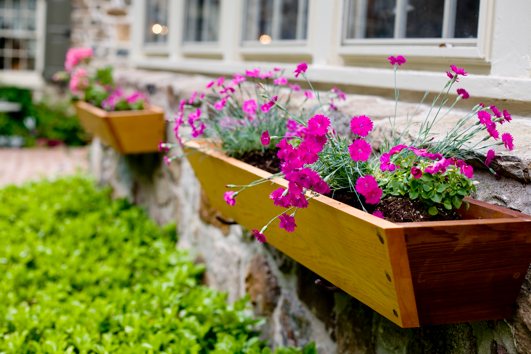Creating a Windowbox
 If you live in a flat or a place that doesn't have a gardent or plant some flowerbeds, this doesn't mean you have to miss out on all of the fun of growing and nurturing your own plants to make your outside space look stunning!
If you live in a flat or a place that doesn't have a gardent or plant some flowerbeds, this doesn't mean you have to miss out on all of the fun of growing and nurturing your own plants to make your outside space look stunning!
There are so many varieties of plants you can choose from to create a bright and colourul summer selection or an evergreen perennial range of plants to give some year-round character to your window box or courtyard. Choosing a quality compost to start your pot with is paramount to their survival and will ensure that the plants have all of the nutrients and minerals they need to thrive.
Our choice of compost includes popular mushroom compost, ericaceous compost and also a selection of John Innes compost to choose from. Once you have your ideal compost in place you can begin to consider the kinds of plant you want.
There are a range of factors to consider before you begin putting together your display, be it a windowbox or a plant pot. The first thing to consider is the light that the plants will get where you will put them. If you are placing them in place where they will be in a lot of shade then Fuchisa's, Ferns and other plants such as a Cyclamen are ideal for poviding some colour and attractive foliage for your pot.
If the plants will be exposed to a lot of sunlight then Petunia's or even Ivy can be a great choce of plant - if you do choose Ivy be sure to keep it trimmed and well maintained as Ivy has a tendency to grow fast and can easily get out of control. Sunny weather is great for provdiing a colourful display and delicate flowers, but bear in mind that if they are exposed to sunlight they may also be exposed to other elements which could be damaging to them.
This is especially true in the case of windowboxes in high rise flats, where the plants will be exposed to higher winds than their ground-level equivalents. For high rises try choosing something like a Geranium which is hardy and able to stand up to most kinds of weather conditions.
If it is a windowbox you are planting, them make sure the box you have chosen is stable enough to take the weight of the compost and plants and ensure it is fastened securely to the windowsill, which can be achieved with brackets or internal fastenings.
Ensure that there is adequate drainage in the bottom of the box in the from of crocks, which can be made from broken pots or polystyrene packaing to prevent compost from falling through the drainage holes.